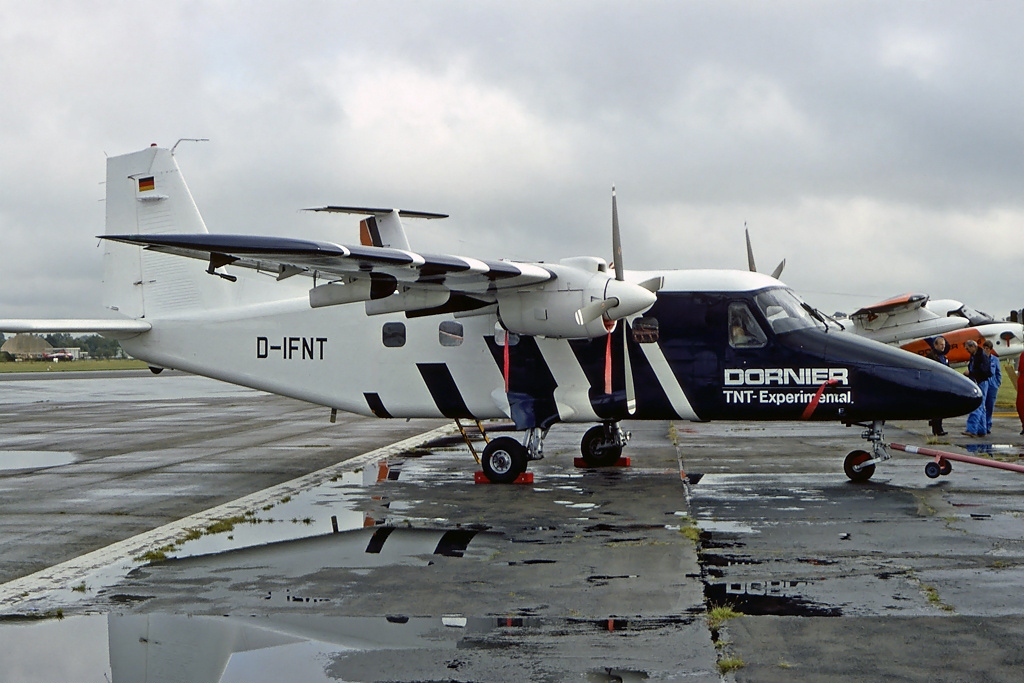|
Flat Rated
When an engine is flat rated it means that an engine of high horsepower rating is constrained to a lower horsepower rating. The engine output in this case will always remain the same, but when atmospheric conditions such as high temperatures and high altitude ("hot and high") reduce the power output of the engine it has more headroom before it falls below the limited maximum output. In some cases the total power output of an engine needs to be constrained because the airframe can only handle a certain force. This is the case with gas turbine engines. Flat rating allows airplanes to operate under more demanding conditions, without the need for extra structural strengthening due to higher peak power output of the engine. For example, the Garrett AiResearch TPE-331-5 engine originally fitted on the Dornier 228 The Dornier 228 is a twin-turboprop STOL utility aircraft, designed and first manufactured by Dornier GmbH (later DASA Dornier, Fairchild-Dornier) from 1981 until 1998. Tw ... [...More Info...] [...Related Items...] OR: [Wikipedia] [Google] [Baidu] |
Horsepower
Horsepower (hp) is a unit of measurement of power, or the rate at which work is done, usually in reference to the output of engines or motors. There are many different standards and types of horsepower. Two common definitions used today are the mechanical horsepower (or imperial horsepower), which is about 745.7 watts, and the metric horsepower, which is approximately 735.5 watts. The term was adopted in the late 18th century by Scottish engineer James Watt to compare the output of steam engines with the power of draft horses. It was later expanded to include the output power of other types of piston engines, as well as turbines, electric motors and other machinery. The definition of the unit varied among geographical regions. Most countries now use the SI unit watt for measurement of power. With the implementation of the EU Directive 80/181/EEC on 1 January 2010, the use of horsepower in the EU is permitted only as a supplementary unit. History The development of the stea ... [...More Info...] [...Related Items...] OR: [Wikipedia] [Google] [Baidu] |
Gas Turbine
A gas turbine, also called a combustion turbine, is a type of continuous flow internal combustion engine. The main parts common to all gas turbine engines form the power-producing part (known as the gas generator or core) and are, in the direction of flow: * a rotating gas compressor * a combustor * a compressor-driving turbine. Additional components have to be added to the gas generator to suit its application. Common to all is an air inlet but with different configurations to suit the requirements of marine use, land use or flight at speeds varying from stationary to supersonic. A propelling nozzle is added to produce thrust for flight. An extra turbine is added to drive a propeller (turboprop) or ducted fan (turbofan) to reduce fuel consumption (by increasing propulsive efficiency) at subsonic flight speeds. An extra turbine is also required to drive a helicopter rotor or land-vehicle transmission (turboshaft), marine propeller or electrical generator (power turbine). Greater ... [...More Info...] [...Related Items...] OR: [Wikipedia] [Google] [Baidu] |
Garrett AiResearch TPE-331
The Honeywell TPE331 (military designation: T76) is a turboprop engine. It was originally designed in the 1950s by Garrett AiResearch, and produced since 1999 by Honeywell Aerospace. The engine's power output ranges from . Design and development Garrett AiResearch designed the TPE331 from scratch in 1959 for the military. “Designed as a 575-horsepower engine it was not a scaled-down version of a larger engine, as competitors were offering.” The TPE331 originated in 1961 as a gas turbine (the "331") to power helicopters. It first went into production in 1963. More than 700 had been shipped by the end of 1973. It was designed to be both a turboshaft (TSE331) and a turboprop (TPE331), but the turboshaft version never went into production. The first engine was produced in 1963, installed on the Aero Commander in 1964 and put into production on the Aero Commander Turbo Commander in June 1965. Performance The 715 shp TPE331-6 used in the Beech King Air B100 have a 400-hr. fuel ... [...More Info...] [...Related Items...] OR: [Wikipedia] [Google] [Baidu] |
Dornier 228
The Dornier 228 is a twin-turboprop STOL utility aircraft, designed and first manufactured by Dornier GmbH (later DASA Dornier, Fairchild-Dornier) from 1981 until 1998. Two hundred and forty-five were built in Oberpfaffenhofen, Germany. In 1983, Hindustan Aeronautics Limited (HAL) bought a production licence and manufactured another 125 aircraft in Kanpur, Uttar Pradesh, India. In July 2017, 63 aircraft were still in airline service. In 2009, RUAG started building a Dornier 228 New Generation in Germany. The fuselage, wings and tail unit are manufactured by Hindustan Aeronautics Limited (HAL) in Kanpur, India, and transported to Oberpfaffenhofen, where RUAG Aviation carries out aircraft final assembly. The Dornier 228NG use same airframe with improved technologies and performances, such as a new five-blade propeller, glass cockpit and longer range. The first delivery was made in September 2010 to a Japanese operator. In 2020, RUAG sold the Dornier 228 program to General Atomi ... [...More Info...] [...Related Items...] OR: [Wikipedia] [Google] [Baidu] |


